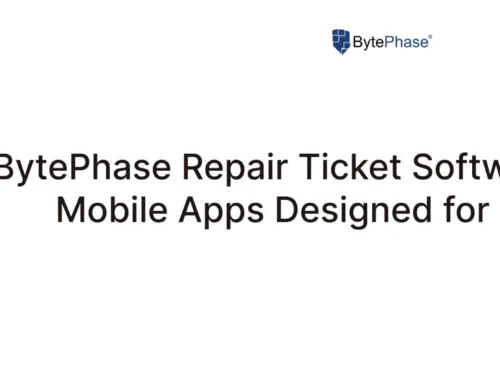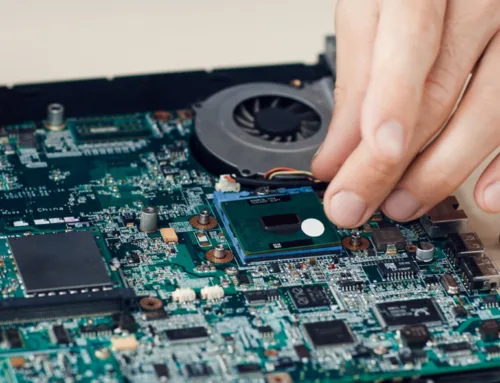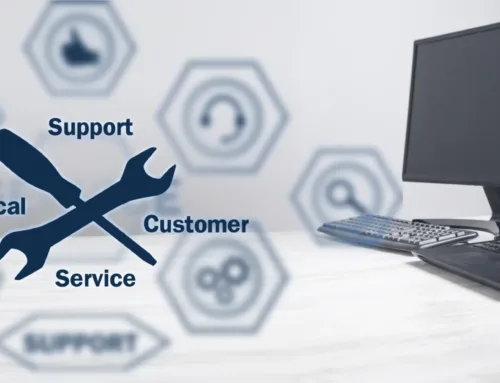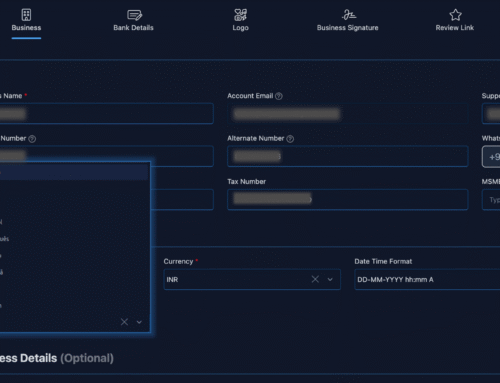Inventory is a Profit Center: How to Manage Your Stock to Boost Your Bottom Line

Introduction
For most repair shop owners, inventory is a necessary evil. It’s a shelf full of costs—the money you spend on parts, the space it takes up, and the time you lose tracking it all. While you can’t run a business without it, it’s often seen as a logistical headache, not a strategic asset.
But what if you could change that perspective? What if your inventory wasn’t just a cost center, but a profit center?
The most successful electronics repair businesses have figured out this secret. They’ve realized that by meticulously managing their stock, they can increase profit margins, improve cash flow, and build a reputation for lightning-fast service. They’ve moved beyond spreadsheets and manual counts and embraced a data-driven approach.
This guide will show you how to do the same, turning a major expense into a powerful engine for growth, all powered by the right inventory tracker software.
The Hidden Costs of Poor Inventory Management
Before we can build a better system, we need to understand the problems we’re solving. Poor inventory management is costing you more than you think.
-
Lost Sales & Unhappy Customers: A customer walks in with a common problem—say, a shattered screen on a popular phone model. You check your shelf, but you’re out of
cellphone parts. The customer leaves, and you’ve not only lost a sale but also created a negative impression. -
Capital Trapped in “Dead” Stock: Every part on your shelf is money you’ve already spent. If you have dozens of screens for an outdated device that no one brings in for repair, that’s capital sitting on your shelf, gathering dust instead of generating revenue.
-
Wasted Time & Labor: Manually counting stock, reconciling invoices, and hunting for misplaced parts takes up valuable employee time that could be spent on billable repairs.
-
Inaccurate Costing: Without a precise way to track the cost of each part, you may be unknowingly underpricing your services. Your
pos systemmight not be able to provide accurate profitability reports for each individual repair.
The Blueprint for a Profitable Inventory
Turning your inventory into a profit center isn’t about magic; it’s about a disciplined, data-driven system. Here’s a blueprint to get you there.
1. Know Your Numbers: Analyze for Profitability
Your repair history is a goldmine of data. Instead of just tracking what you have, track what sells.
-
Identify Your “A” Items: The ABC analysis is a classic inventory management principle. “A” items are your stars—the top 20% of your stock that accounts for 80% of your revenue. This is typically the fastest-moving and most profitable inventory.
-
Optimize Reorder Points: Once you know your most popular
cellphone partsorcomputer parts, set a precise reorder point for each. Never run out of a fast-moving item again. -
Track Profitability by Part: Some parts have better margins than others. By tracking this data, you can make more informed purchasing decisions and adjust your pricing accordingly.
2. Manage All Your Inventory, Not Just the New Stuff
A professional repair shop manages more than just brand-new parts. Your ability to track every component is crucial for efficiency and profitability.
-
Used & Refurbished Parts: Are you buying back old devices or salvaging parts from donor boards? This inventory can be a huge profit center, but it requires meticulous tracking to avoid errors.
-
Serialized Parts: For high-value, unique components like motherboards or screens with IMEI or serial numbers, you need a system that tracks the part from the moment it enters your shop to the moment it leaves. This is critical for warranty claims, customer confidence, and preventing fraud.
-
Consumables: Don’t forget the small stuff!
Repair toolslike specialized adhesives, soldering wire, and cleaning alcohol all have a cost. Track them as part of your inventory to get a true picture of your repair costs.
3. Streamline Your Supplier Relationships
A good inventory tracker software is not just for your own stock; it’s a tool for managing your entire supply chain.
-
Centralize Your Suppliers: Keep a master list of all your suppliers, their contact info, and average lead times.
-
Automate Purchase Orders: Once you hit your reorder point for a specific part, you should be able to create and send a purchase order with a single click.
-
Track Your Performance: Use your system to track supplier performance. Are they delivering on time? Are there a lot of defective parts? This data empowers you to negotiate better terms and build stronger partnerships.
The BytePhase Advantage: Your Ultimate Inventory Management System
Implementing a strategic inventory system sounds complex, but with the right inventory tracker software, it’s simple and intuitive. BytePhase is the all-in-one solution designed to turn your inventory from a cost center into a profit engine.
-
Real-Time Tracking & Barcode Integration: BytePhase gives you a live look at your stock levels. With our barcode scanning functionality, you can check parts in and out instantly, eliminating human error and manual data entry.
-
Automated Low Stock Alerts: Our system automatically alerts you when a part hits its reorder point, so you’re never caught off guard by an urgent repair.
-
Detailed Profitability Reports: BytePhase’s reporting features go beyond simple stock counts. We show you which parts and repairs are generating the most profit, so you can make data-driven decisions to increase your bottom line.
-
Comprehensive Parts Management: Our platform is built to handle all types of inventory, from brand new
cellphone partswith serial numbers to used or refurbished components, ensuring you have a single source of truth for your entire stock. -
POS System Integration: When a part is used in a repair, it’s automatically deducted from your inventory and added to the customer’s invoice, creating a seamless, transparent workflow for your staff and customers.
By taking control of your inventory with a powerful platform like BytePhase, you’re not just stocking shelves; you’re investing in the future of your business. You’re building an operation that is lean, efficient, and, most importantly, highly profitable.













